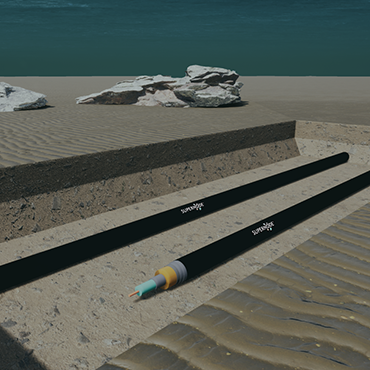Achieving subsea power transmission at high power capacities and low energy losses is paramount for the future of the offshore renewable energy sector. The submarine HTS cable systems developed in SCARLET will enable transmission of large amounts of power (1 GW+) at medium voltage (50-100 kVDC). This technology opens new possibilities for offshore renewable energy production and export using medium voltage along the energy conversion chain.
Key activities
The work package is structured into two main tasks:
1. Use cases and architectures of offshore HTS cable systems
The aim of this task is to identify and select the most relevant use cases that crystallize the benefits of this technology and to specify the main parameters of the corresponding cable systems. The use cases are selected based on key parameters such as water depth, seabed geology, cable length, typical deployment methodologies, and are refined based on stakeholders’ needs and requirements. For each use case, the cable system architectures will be presented and discussed with relevant industry asset owners and operators.
2. Techno-economic, environmental and risk assessments of offshore HTS cable systems
A techno-economic assessment will be carried out for each use case as part of the iterative process to ascertain optimal cable system architectures. This will include comparisons with reference scenarios resorting to commercially available offshore cables. Additionally, the environmental impacts and the life cycle of both commercial and SCARLET submarine cables will be assessed and compared.
As with all submarine cable systems, the HTS cable system presents some typical risks during installation, operation and decommissioning that can be managed by design or with specific services throughout its lifetime. The addition of cryogenic technologies leads to new, specific considerations that will also be investigated in the risk assessment.
